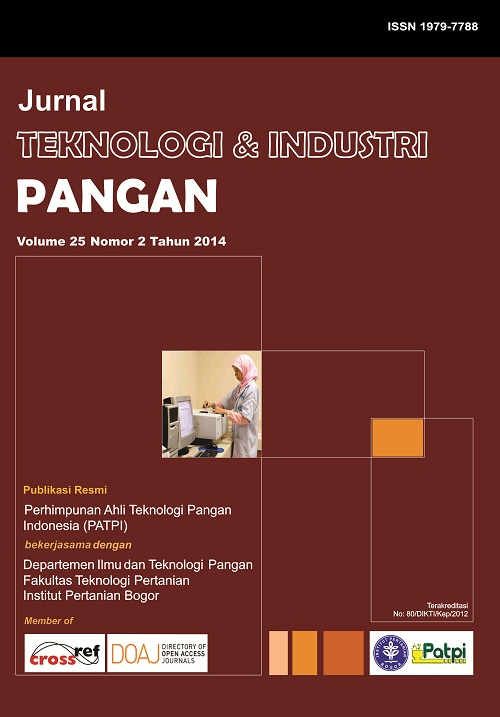PENGHAMBATAN CAJUPUTS CANDY TERHADAP VIABILITAS KHAMIR Candida albicans SECARA IN VITRO [Inhibition of Cajuputs Candy Toward the Viability of Candida albicans by using In Vitro Assay]
Abstract
The utilization of cajuput essential oil as a flavor in candy might give other physiological active value added. Some compounds of cajuput plant (Melaleuca cajuputi L) have been reported for their anti-microbe activities. Candida albicans is a normal commensal organism in human mouth. However, it might become virulent and responsible for oral diseases known as oral candidiasis. This study aimed to determine the effect of cajuput and peppermint oil in cajuputs candy in inhibiting the C. albicans biofilms formation by using biofilm assay and viability assay, in vitro test. Furthermore, the influence of concentration cajuput oil on its activities has also been analyzed. The result showed that the concentration of cajuput oil in cajuputs candy has been effective to inhibit the viability of C. albicans. The provision of flavor components of cajuput and peppermint oil could produce synergistic effects compared to single flavor component. The addition of cajuput oil at 0.6% has been able to inhibit the viability of C. albicans. The activities of the cajuput oil showed positive correlation with its concentration. The variable plus and minus 0.1% addition, however, did not give any significant different in its inhibition. Sensory test (hedonic test) to evaluate the flavor, aroma, and overall attributes showed there was no significant difference between 0.6 to 0.8% addition of cajuput oil upon the sensory acceptance.

